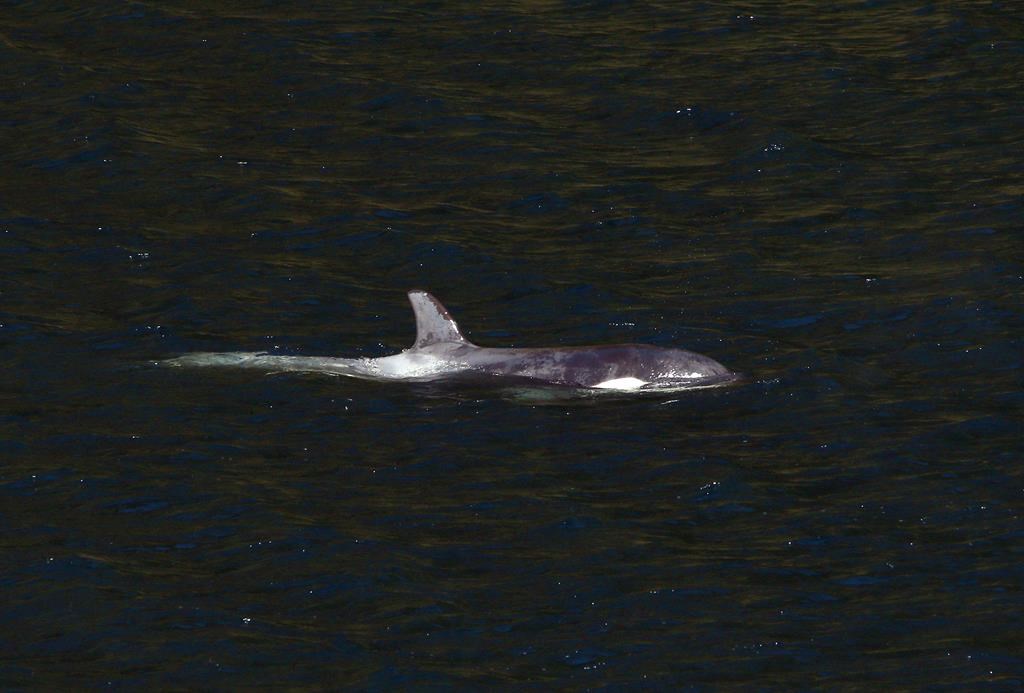High-altitude runner Kilian Jornet conquers Everest, twice
Posted June 16, 2017 8:09 am.
Last Updated June 16, 2017 8:41 am.
This article is more than 5 years old.
BARCELONA, Spain – Their bodies and brains ravaged by the oxygen-scarce heights of the Himalayas, even the hardiest few who scale the treacherous slopes of Mount Everest cut short celebrations for some well-deserved rest.
Not Kilian Jornet.
Somehow, he still had some legs left.
“My plan was to go up one time,” Jornet told The Associated Press in a recent interview in Barcelona, a couple of hours south of his native Pyrenees. “When I was going down, I was like, ‘Hmm, we could have some days before we leave’ . I wanted to try to go back up again.”
So the man who has helped nurture high-altitude running from obscurity into the forefront of extreme mountain sports set out for a second solo ascent in a six-day span of the tallest peak in the world.
Not that Jornet had anything left to prove. Despite being slowed by a stomach bug that caused him to vomit and cramp while climbing, Jornet made his first ascent up Everest’s north face from the base camp near the Rongbuk monastery at 5,100 metres in Tibet, crowning the 8,848-meter summit around midnight of May 21 in 26 hours after one continued push. That was the fastest known time for the route without the use of supplemental oxygen, according to the International Skyrunning Federation, which governs high-altitude racing.
By May 27, Jornet had recovered quickly enough to make a second ascent from an advanced base camp, at 6,400 metres. He passed by three camp sites where climbers usually need to rest and reached the summit in 17 hours, just 15 minutes slower than the record set by Hans Kammerlander in 1996.
That climb usually takes mountaineers a lot longer. Something like four full days.
Jornet didn’t rue missing Kammerlander’s mark because his conquering of Everest was the culmination of a personal mission to tame the world’s most intimidating peaks.
“For me the times is an excuse, always,” Jornet said. “It was interesting to see if it is possible to go up and down, to climb mountains in the Himalayas (like) we climb in the Alps or the Rockies or in home ranges because it (does) not need a big infrastructure, big logistics. You just need your backpack, and if it is good weather you can climb and some days after you can do it again.”
Maybe if you are as superhuman, or as souped-up human, as Kilian Jornet.
The 29-year-old Spaniard ascended Everest without the help of other climbers, fixed ropes, or supplemental oxygen to counter the brain-withering effects of the “death zone” above 8,000 metres.
Only about 200 climbers have ever made it up Everest without the use of supplemental oxygen since Reinhold Messner and Peter Habeler did it for the first time in 1978. Before those pioneers proved otherwise, it was thought to be a guaranteed death. Only about 20 have ever done it twice, like Jornet. The large majority of those who venture up Everest still take extra oxygen.
With or without supplemental oxygen, Everest remains one of the most perilous places on the planet. Nearly 300 people are known to have died on the mountain. This year is proving particularly deadly, with 10 lives lost through May, including renowned Swiss mountaineer Ueli Steck. And since retrieving corpses is dangerous and costly, Everest’s slopes have become an open grave.
Experienced American mountaineer Adrian Ballinger was climbing Everest for the first time without supplemental oxygen when he crossed paths with Jornet on his descent on May 22.
“I could see the pride and exhaustion in his eyes after the first climb. It’s hugely impressive to do it from base camp in one push. It took me four days,” Ballinger, who had already climbed Everest six times with an oxygen bottle, told the AP by telephone. “The big thing is really to do it twice in one week. I have climbed it with oxygen twice in one week and found it incredibly challenging. This time (a single climb without supplemental oxygen) it was devastating.”
Ballinger believes that Jornet’s style of climbing with minimal gear and his years of running long-distance races in the mountains have opened up new horizons in mountaineering because, by travelling light and fast, Jornet can spend fewer hours in the oxygen-scarce “death zone,” thus limiting the possible damage to his brain.
“I see that as incredible potential,” Ballinger said. “I think (Jornet and other high-altitude runners) are going to blow away what we climbers that was possible.”
Jornet even tried running a bit in Everest’s thin air.
“On this expedition there was a day that I went walking until 8,000 metres and I tried a sprint,” Jornet said. “I went up running, and after 50 metres I just threw myself on the ground to recover. But that was just for fun.”
Long before Everest, Jornet had established himself as one of the premier athletes in the world of extreme mountain sports.
He has broken speed records for ascents of Kilimanjaro, Matterhorn, Mont Blanc, Aconcagua and Denali, among other mountains. He has won the Skyrunning world championship six times, and his victories include a long list of the high-altitude races, ultra-marathons, and ski mountaineering titles. Just to pick two of his almost absurd highlights: he completed the 800-kilometre trans-Pyrenees mountain trail in eight days, when regular hikers need at least six weeks; and he ran the 265.5-kilometre Tahoe Rim trail in 28 hours, while claiming to sleep for only one hour.
Jornet is “undoubtedly the best skyrunner all-round as he has been able to achieve success in all the disciplines,” International Skyrunning Federation co-founder Lauri van Houten told the AP by email. Marino Giacometti, the federation president, called Jornet “the best skyrunning ambassador.”
Graced with a small, wiry build that helps him scamper up rocks and dart along narrow mountain paths, Jornet said his main advantage is the ability to recover quickly by checking his pace.
Jornet grew up in a mountain refuge his father maintained in Catalonia’s Pyrenees near the Spanish border with Andorra. As a kid he would ski, run and bike the 10 kilometres back and forth to school each day.
“I climbed my first 3,000-meter peak when I was 3, my first 4,000-meter peak when I was 5. I have been training since I was 13 every day,” Jornet said. “So it’s a lot of hours spending on training and doing long-distance races and spending a lot of hours on technical training in the mountains. And then mentally, in the last few years I have been pushing my comfort areas to be confident in areas where before I was scared.”
Jornet insists that respect for both the beauty, and the danger, of the outdoors is central to his approach to sports. He has seen firsthand how quickly competition can turn tragic. His friend Stephane Brosse plummeted to his death while the two were skiing on Mont Blanc in 2012.
And Jornet witnessed nature in all her fury when in 2015 an earthquake rocked Nepal just as he was flying there to attempt a climb of Everest. He immediately aborted his expedition, but decided to stay and help out the devastated country, hiking with two companions into cut-off villages to identify the dead and bring in desperately needed supplies. When he left a month later, he gathered funds to build houses in the hard-hit Langtang valley.
“It was a very positive experience for me to see how sports, which is a very egocentric thing, because after all it is about your body, your life, your time … that through this sports and its self-centeredness, you can do something to help others,” he said.
A year later, Jornet returned to check on the rebuilding efforts in Nepal, and to take another shot at Everest. But far from being the daredevil, the cool-tempered Jornet pulled the plug when the conditions turned ugly, with heavy snow and high winds producing a series of avalanches.
“We got covered three times, one time the avalanche just passed over me, and at that moment I was like, yeah, it could be the last one,” Jornet said.
Close calls like that one have led Jornet to this valuable formula: embrace both fear and failure.
“I would say that the 50 per cent of the time I am in the mountains I turn back. So 50 per cent of the time is like failure in a way,” Jornet said. “I think it is important to keep this fear in a way because it is this fear that makes you turn around and stay alive.”










